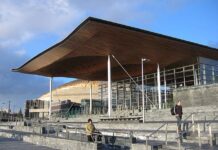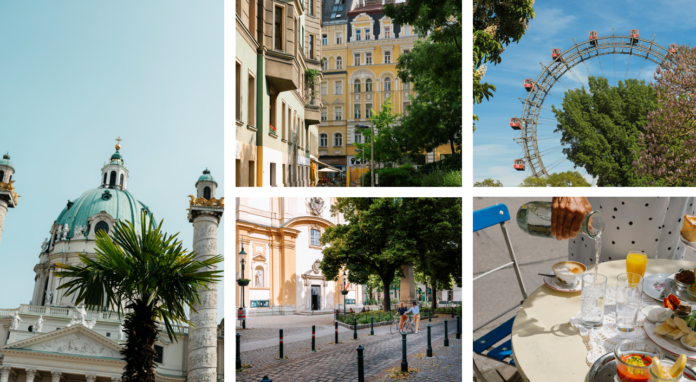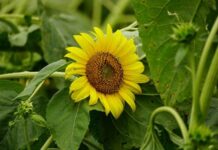When someone mentions Vienna, what is it that springs to mind? Perhaps it’s the city’s rich musical history, having been the home of musicians such as Beethoven and Mozart and still having an impressive opera scene to this day. Or maybe it’s the Austrian capital’s imperial heritage, with its stunning Baroque and Gothic palaces and relaxed UNESCO status coffeehouse culture. However, there is so much more to discover in Vienna beyond its main sights and attractions that are mostly found within the 1st district.
Vienna is comprised of 23 districts, and the neighbourhoods within these districts are referred to by locals as “Grätzel”, describing a small inner-city unit that is made up of a few streets. Each Grätzel has its own distinct atmosphere and charm; the beating hearts of the city. The Vienna Tourist Board has designed a quiz so that visitors can find out which Grätzel they are best-suited to. Find out more on some of our favourite lesser-known neighbourhoods below…
Stuwerviertel and Prater

Located within the 2nd district is Vienna’s former red-light district, the neighbourhood of Stuwerivertel. Here visitors can find a lively bohemian ambience, alongside a number of culinary gems, boutique hotels and quirky museums.
The Vorgartenmarkt is the neighbourhood’s gastronomy hotspot, with a framer’s market on Fridays and Saturdays offering a range of fresh fruit, vegetable and specialty ingredient stalls, and a number of hot food stands and pavement cafes for people to stop at and enjoy. For those seeking a hearty meal, Gasthaus Möslinger can be found just a short walk away. This family-run restaurant has been open since 1989 and serves traditional Austrian food, utilising the best of regional and seasonal ingredients.
For some exhilaration look no further than the nearby world-famous Prater amusement park. The park is free to enter and is home to around 250 attractions, operating a pay-as-you-go system, with rollercoasters, ball tosses, ghost trains and more. The most famed of these attractions is the Giant Ferris Wheel – the oldest working ferris wheel in the world, having been in operation since 1897. Within the amusement park, there is also the recently built Prater Museum, which recounts the history and significance of Prater through a variety of artefacts. After all the excitement, a stone’s throw away there is the Green Prater, a spacious forest and meadow double the size of New York’s Central Park, which was formerly an imperial hunting ground and now serves as a haven for walkers, runners and horseback riders.
Freihausviertel

The 4th district Grätzel of Freihausviertel is one of Vienna’s trendiest, with cool coffee joints, contemporary galleries and classic bistros. This neighbourhood also has a rich history, with Mozart’s Magic Flute premiering here for the first time in 1791 at the Freihaus Theater.
It is in this Grätzel that you will find the most enchanting of cafés. Vollpension is a social enterprise café which works to bridge the generational gap between its patrons and its employees. The café hires elderly people to bake cakes and serve visitors, helping to combat loneliness in the city’s older residents, as well as providing them with work which will help them to supplement their state pensions. Vollpension also runs workshops led by the grannies and grandpas, where people can learn how to make their signature baked goods.
2024 marks the 75th anniversary of the release of the renowned Orson Welles film, The Third Man. Set and filmed in post-war Vienna, this film-noir is considered to be one of the greatest movies ever made, and Freihausviertel just so happens to be the home of the dedicated Third Man Museum. With 13 rooms of more than 2,500 exhibits, this museum not only provides an extensive history of the making of the film but also gives a detailed overview of the occupation period in Vienna between 1945 and 1955.
Servitenviertel

Known as “Little Paris” by the people of Vienna, the French-style Grätzel of Servitenviertel is located within the city’s 9th district. Whilst many may think it got this nickname due to the Parisian flared architecture and idyllic cobbled streets, it is also home to Vienna’s French school.
A highlight of this Grätzel is the Liechtenstein Garden Palace. This magnificent Baroque building used to house the Museum of Modern Art, but now holds parts of the art collection of the Liechtenstein dynasty, one of the largest and most important private collections in the world, with pieces from famed artists such as Raphael and Rembrandt. The surrounding park also makes for the perfect pitstop on a sunny day.
For history and psychology fans, Vienna’s most famous address can be found in Servitenviertel; Berggasse 19, the home of neurologist Sigmund Freud for almost 50 years, and now the location of the Sigmund Freud Museum. The former private rooms are the birthplace of psychoanalysis and were opened to the public back in 2020 following a major remodelling which doubled the size of the exhibition. As well as telling the story of how psychoanalysis was founded by Freud through hundreds of archival pieces, the museum also chronicles the loss of culture and humanity under the terror regime of National Socialism through the building’s history.
Help keep news FREE for our readers
Supporting your local community newspaper/online news outlet is crucial now more than ever. If you believe in independent journalism, then consider making a valuable contribution by making a one-time or monthly donation. We operate in rural areas where providing unbiased news can be challenging. Read More About Supporting The West Wales Chronicle






















